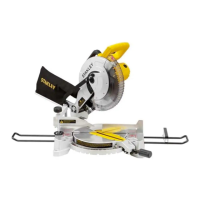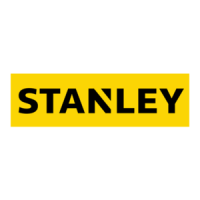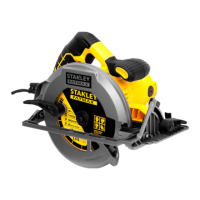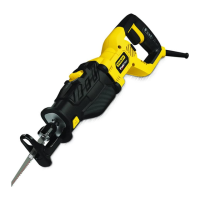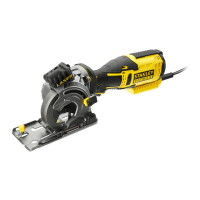9
Lower Guard Safety Instructions
a. Check the lower guard for proper closing before
each use. Do not operate the saw if lower guard does
not move freely and close instantly. Never clamp or
tie the lower guard into the open position. If saw is
accidentally dropped, lower guard may be bent. Raise
the lower guard with the retracting handle and make
sure it moves freely and does not touch the blade or
any other part, in all angles and depths of cut.
b. Check the operation of the lower guard spring. If the
guard and the spring are not operating properly, they
must be serviced before use. Lower guard may operate
sluggishly due to damaged parts, gummy deposits, or a
build-up of debris.
c. The lower guard should be retracted manually
only for special cuts such as “plunge cuts” and
“compound cuts”. Raise lower guard by retracting
handle and as soon as blade enters the material, the
lower guard must be released. For all other sawing,
the lower guard should operate automatically.
d. Always observe that the lower guard is covering
the blade before placing saw down on bench or
floor. An unprotected, coasting blade will cause the
saw to walk backwards, cutting whatever is in its path.
Be aware of the time it takes for the blade to stop after
switch is released.
Additional Safety Instructions for Circular Saws
♦
Wear ear protectors. Exposure to noise can cause
hearing loss.
♦
Wear a dust mask. Exposure to dust particles can cause
breathing difficulty and possible injury.
♦
Do not use blades of larger or smaller diameter
than recommended. For the proper blade rating refer
to the technical data. Use only the blades specified in
this manual, complying with EN 847-1.
♦
Never use abrasive cut-off and diamond wheels. Do
not cut concrete, brick, steel or other hand materials.
♦ Do not use water feed attachments.
♦ Use clamps or another practical way to secure and
support the workpiece to a stable platform. Holding
the work by hand or against your body leaves it unstable
and may lead to loss of control.
♦ Do not use this saw as a table saw.
Additional Safety Information
WARNING: We recommend the use of a residual
current device with a residual current rating of
30mA or less.
RESIDUAL RISKS
In spite of the application of the relevant safety regulations
and the implementation of safety devices, certain residual
risks cannot be avoided. These are:
– Impairment of hearing
– Risk of personal injury due flying particles.
–
Risk of burns due to accessories becoming hot
during operation.
– Risk of personal injury due to prolonged use.
– Risk of dust from hazardous substances.
LABELS ON TOOL
In addition to the pictographs used in this manual, the labels
on the tool show the following pictographs:
WARNING! To reduce the risk of injury, the
user must read the instruction manual before
use.
Wear ear protection.
Wear safety glasses or goggles.
Wear a dust mask.
Date Code Position (Fig. A)
The Date Code (z), which also includes the year of
manufacture, is printed into the housing.
Example:
2018 XX XX
Year of Manufacture Package Contents
THE PACKAGE CONTAINS
1 Circular Saw SC16
1 Circular Saw Blade
1 Blade Wrench
1 Parallel Fence
1 Instruction manual
♦
Check for damage to the tool, parts or accessories which
may have occurred during transport.
♦ Take the time to thoroughly read and understand this
manual prior to operation.
FEATURES (FIG. A)
WARNING: Never modify the power tool or any
part of it. Damage or personal injury could result.
a. Trigger switch
b. Main handle
c. Blade lock
d. End cap
e. Auxiliary handle
f. Bevel adjustment knob
g. Bevel angle adjustment mechanism
h. Base plate
i. Lower blade guard
j. Blade clamping screw
k. Lower guard lever
l. Upper blade guard
m. Lock-off button (Lock-Off button for specified regions)
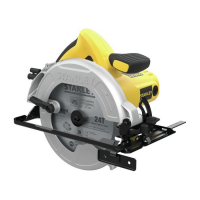
